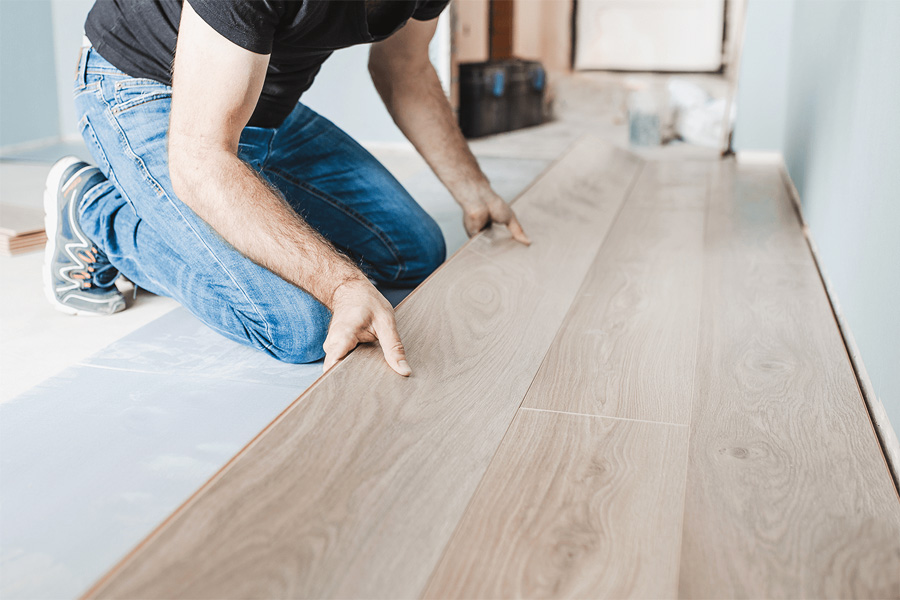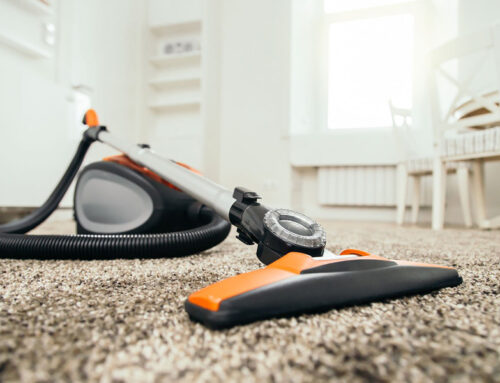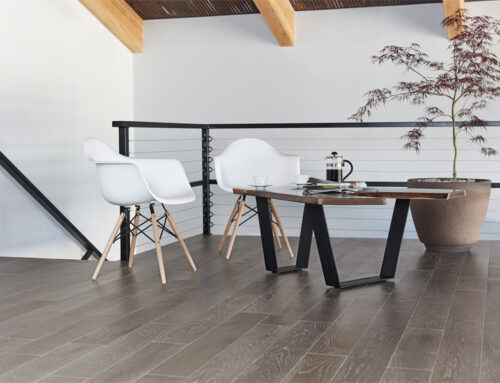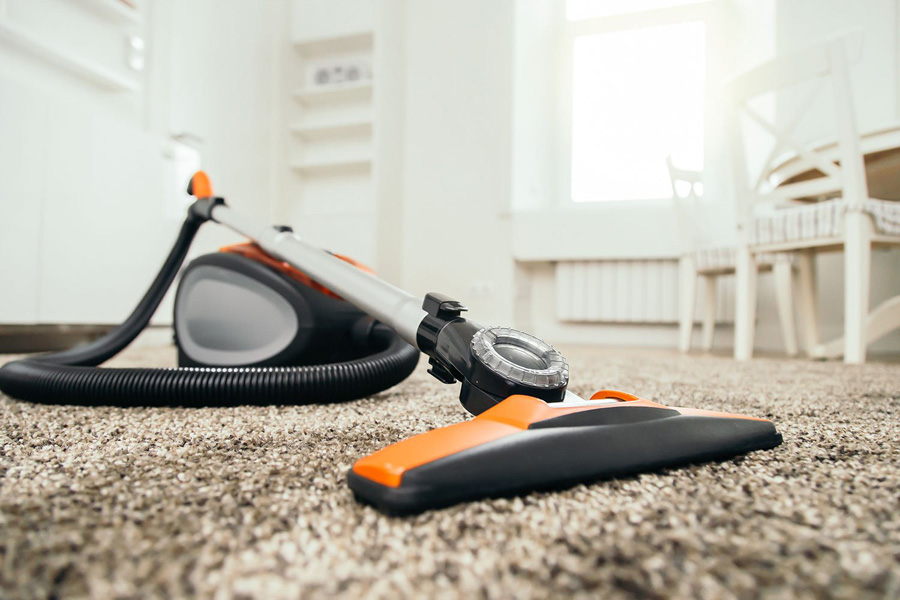Laminate flooring has become a popular choice for homeowners looking for an affordable and durable flooring option. With its realistic wood-like appearance and easy installation, it’s no wonder why so many people choose laminate over hardwood or tile. In this guide our flooring experts go over some common mistakes when laying laminate flooring.
Whether you’re a professional contractor or a DIY enthusiast, laying laminate flooring can be tricky. If done incorrectly, it can quickly lead to costly mistakes.
Let’s dive right in to the most common mistakes when laying laminate flooring:
1. Poor Floor Maintenance
Proper floor maintenance is crucial when it comes to laying laminate flooring. The subfloor must be clean and level before installation or the laminate planks will not lay properly. This can lead to uneven and unsightly floors and potential structural problems.
Here are some common mistakes to avoid when it comes to floor maintenance:
Not removing old adhesive
Removing old adhesive or glue is important before installation if you’re laying laminate flooring over an existing floor. This can be done using a scraper or an adhesive remover. Failure to do so can cause the laminate planks to not lay flush with the subfloor, resulting in uneven floors.
Forgetting to level the subfloor
The subfloor must be level before installing laminate flooring. If the subfloor is leveled, the laminate planks will not lay properly, causing uneven and unsightly floors. If the subfloor is not level, you can use a self-leveling compound to level it out. Seek the help of a professional flooring company like Next Day Floors to ensure your subfloor gets leveled correctly.
Not cleaning the subfloor
The subfloor should be cleaned before installation to remove any debris or dust. This will ensure that the laminate planks will lay properly and that the adhesive will stick properly.
Not acclimating the laminate planks
Laminate planks should be acclimated to the room where they will be installed before installation. This means that the planks should be left in the room for a few days to adjust to the temperature and humidity of the room. Failure to do this can cause the planks to warp or buckle after installation.
2. Incorrect Measuring and Cutting
Measuring and cutting the laminate planks correctly is necessary for a seamless and professional-looking installation. A single mistake in measuring or cutting can result in uneven or unsightly floors and even the need to redo the entire installation.
Check out some of the common mistakes to avoid when measuring and cutting laminate planks:
Not allowing for expansion space
Laminate flooring needs to have expansion space around the room’s perimeter to expand and contract due to temperature and humidity changes. The general rule is to leave a gap of about 1/8 inch around the room’s perimeter. Failure to do so can cause the laminate planks to buckle or warp over time.
Incorrect plank cuts
The laminate planks should be cut to the correct size using a saw or a cutter specifically designed for laminate flooring. Failure to do so can result in uneven or unsightly floors.
Measuring the room incorrectly
Before you start cutting the planks, it’s essential to measure the room correctly. This means measuring the length and width of the room and accounting for any irregular shapes or features, such as closets or fireplaces. A common mistake is not accounting for these features and ending up with too few or too many planks.
Not accounting for doorways and transitions
When measuring for laminate flooring, it’s essential to account for doorways and transitions to other flooring materials. This means measuring the width of the doorways and cutting the planks to fit the space. Failure to do so can result in uneven or unsightly floors.
3. Incorrect Installation Techniques
Installing laminate flooring can be tricky, and even a small mistake in the installation process can result in uneven or unsightly floors. These are the common mistakes to avoid when installing laminate flooring:
Not using the correct adhesive
Laminate flooring should only be installed using the correct adhesive specifically designed for laminate flooring. Using the wrong adhesive can result in the planks not sticking properly, causing uneven and unsightly floors.
Not staggering the planks
The laminate planks should be installed in a staggered pattern, with the end of one plank not lining up with the end of the next plank. This is important to ensure that the floor is stable and to prevent any warping or buckling of the planks over time.
Not tapping the planks correctly
The laminate planks should be tapped into place using a tapping block and a hammer. The tapping block is used to ensure that the planks are flush with each other and to prevent any damage to the planks.
Not leaving expansion space
As mentioned earlier, laminate flooring needs expansion around the room’s perimeter to expand and contract due to temperature and humidity changes. Failure to do so can cause the laminate planks to buckle or warp over time.
4. Skimping on Underlayment
Underlayment is an essential component of laminate flooring installation, as it provides a smooth, level surface for the planks to be laid on, as well as sound and moisture insulation. Skimping on underlayment can result in uneven, squeaky, and noisy floors, as well as potential water damage. Here are some common mistakes to avoid when it comes to underlayment:
Not using underlayment at all
Laminate flooring should always be installed over an underlayment, as it provides a smooth, level surface for the planks to be laid on, as well as sound and moisture insulation. Skipping underlayment can result in uneven, squeaky, and noisy floors and potential water damage.
Using the wrong type of underlayment
Not all underlayment is created equal, and using the correct type of underlayment for your laminate flooring is crucial. For example, if you’re installing laminate flooring in a room with high humidity, you’ll need to use a moisture-resistant underlayment.
Not using enough underlayment
Too little underlayment can result in uneven, squeaky, noisy floors and potential water damage. It’s essential to use the correct amount of underlayment to ensure a smooth, level surface for the planks to be laid on.
Not sealing the underlayment
Sealing the underlayment is especially important when installing laminate flooring in a room with high humidity or risk of water damage. Failure to do so can result in water damage to the underlayment and the laminate planks.
Laminate Flooring Done Right
Laying laminate flooring can seem daunting, but by avoiding these common mistakes, you can ensure that your laminate flooring installation is professional-looking and long-lasting. From poor floor maintenance to skimping on underlayment, there are many potential pitfalls to watch out for.
Simply put, taking the time to properly prepare your floors, measure and cut the planks correctly, and use the correct installation techniques can ensure that your laminate flooring will last a long time.
If you’re unfamiliar with the installation process, consider hiring a professional flooring company to do the job for you. We offer one of the best flooring selections in Maryland. We have the expertise and experience to ensure that your laminate flooring is installed correctly and to the highest standards.






